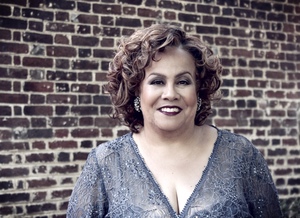Aurora Musicalis, whose members are violinist Brian Reagin, cellist, Elizabeth Beilman, clarinetist Jimmy Gilmore, and pianist John Noel, performed Olivier Messiaen‘s Quatuor pour la fin du temps (“Quartet for the End of Time”) in the reverent setting of Church of the Nativity in north Raleigh. This seminal work of the twentieth century, written some seventy years ago, reached our ears, in this stunning rendition, as fresh and powerful as it must have been at its first performance.
Messiaen was 31 years old when the French division (a medical corps) of which he was a part was captured by the Germans and he was imprisoned in a POW camp, namely Stalag VIII-A. Captured with him was the French clarinetist Henri Akoka, for whom he was writing a piece of music exploring the sound of birds. Into the camp then came violinist Jean le Boulaire and cellist Étienne Pasquier. Messiaen wrote a short trio for the three of them. With the aid of a music-loving Belgian guard who worked in the camp, this was expanded to become the Quartet for the End of Time, with a piano part played by the composer.
The inspiration came from the King James version of the book of Revelation. Messiaen inscribed it in his score: “In homage to the Angel of the Apocalypse, who lifts his hand toward heaven, saying, ‘There shall be time no longer.'”
The quartet is structured in eight sections. These notes are abbreviated from Messiaen’s, with some comments of my own.
I. Crystal liturgy: the solo clarinet imitates a blackbird’s song and the violin imitates a nightingale. An underlying pulse is provided by cello and piano. The piano part consists of a 17-note rhythmic pattern permuted strictly through 29 chords, as if to give the listener a glimpse of eternity.
II. Vocalise: the voice of the Angel who announces the end of time. This section contains what Messiaen characterizes as blue-green chords in the piano against a solemn chant-like melody played by the violin and cello.
III. Abyss of birds: the solo clarinet gives us a taste of eternity with the sadness and weariness of time played at an excruciatingly slow tempo.
IV. Interlude: for violin, cello and clarinet. A scherzo that sounds “familiar” – sort of.
V. Praise to the eternity of Jesus: a majestic, powerful, and gentle hymn to Jesus “whose time never runs out.” This is played by the cello and piano.
VI. Dance of fury, for the seven trumpets. In this section the full quartet plays in unison wild rhythmic patterns depicting disasters of the apocalypse.
VII. Tangle of rainbows, for the angel who announces the end of time. This awesome music describes suffering that nearly breaks the boundaries between fantasy and real. The full quartet performs.
VIII. Praise to the immortality of Jesus. This section is a eulogy to Jesus the man, the Word made flesh, for solo violin grounded in steady chords by the piano. It ascends slowly to a shimmering high E as the believer ascends to God and finally fades out when it reaches paradise.
So it was that on a brutally cold January night in 1941 at the Stalag VIII-A camp in Görlitz, Germany, the Quartet for the End of Time was first heard by an audience that included perhaps 400 prisoners, several of their guards, and, seated on the front row, shivering along with the rest of them, the German officers of the camp.
This music, spiced with remarkable harmonic and rhythmic innovations by one of the giants of the twentieth century, continues to astonish and amaze its audiences. Its apocalyptic images are powerful without being flamboyant. Its hymns of praise are moving without being sentimental. Its musical language puts us in touch with birds and rainbow colors and supernatural beings that reveal to us the nature of things we never dreamed of but find are elemental.
You could search high and low in today’s musical world and not find a quartet of musicians better equipped to perform this extremely challenging and extraordinary work. Reagin is Concertmaster with the NC Symphony, Beilman is Associate Principal Cello, and Gilmore recently retired as Principal Clarinet. Pianist Noel is a highly regarded musician with outstanding credentials from North Carolina School of the Arts, Oberlin, Juilliard, and more.
Their performance was definitive, revealing a comprehensive understanding of the music, both technically and spiritually. There were moments when the musicians and the audience seemed to be carried away. When one hears a work like this performed by musicians like this, one feels the sensation of being transported beyond the ordinary, and it is difficult to put such an experience into words. The best we can do is express gratitude and deep appreciation of the debt we owe to the composer and to the performing artists who enrich life so beautifully.











